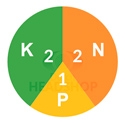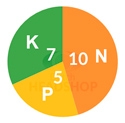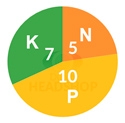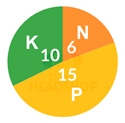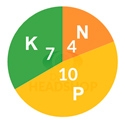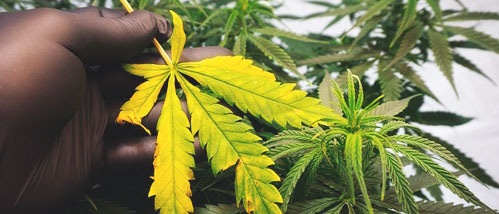
You are standing in front of the store shelf in the garden center. Why shouldn't a little Pokon be enough for your weed plant? But which variety do you choose? Every year, the range of plant nutrition seems to grow. Soon, the enormous choice is rushing through you. So you choose to shop online. Then you read online that weed nutrition comes in many different flavours. Is there really a difference between them? Is growth and bloom nutrition really different or is that Dutch-Headshop just trying to sell you something?
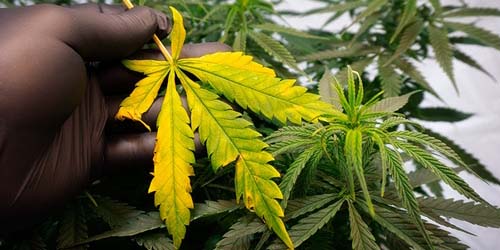
Want to prevent yellow leaves? Then give the right plant nutrition for weed plants!
Difference between growth and bloom nutrition?
The short answer is that there is a substantial difference in growth and bloom nutrition for weed plants. But weed nutrition is already unique in itself. After all, a weed plant is not a cactus, orchid or maple. Although the leaves do resemble the maple. If you squint your eyes a little. We are getting off track. The differences in nutrition are mainly in the proportions of the main fertilizers. And these are the total amount of nitrogen (N), phosphorus (P) and potassium (K). Together we talk about the NPK of a nutrition. And this varies per plant and the life stage of the plant.
NPK
So it's all about the ratio of nitrogen (N), phosphorus (P) and potassium (K). Usually there are three numbers on the label or in the user manual of your plant nutrition. Take 2-1-3 for example. That means there are 2 parts nitrogen, 1 part phosphorus and 3 parts potassium dissolved in the fertilizer. These three elements are not simply floating around in the bottle. Fortunately not, because that would produce a life-threatening cocktail. The three elements are stored in substances that the plant can absorb directly, or in substances that bacteria or fungi absorb and pass on to the plant. Examples of fertilizers are ammonia, phosphoric acid anhydride and nitrate.
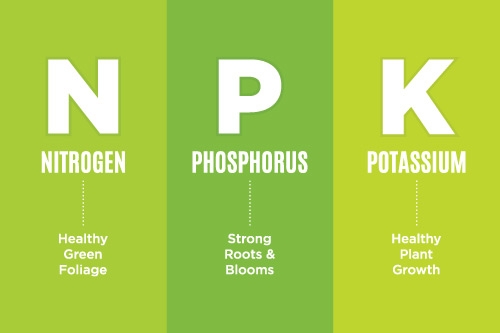
With sufficient nitrogen (N), phosphorus (P) and potassium (K), you can grow a healthy weed plant.
How much of each substance a plant needs depends on several factors. Perhaps the most obvious factor is the type of plant. A cactus, for example, can do with very poor soil, while a head of lettuce only does well in richly fertilized soil. Apart from the fact that weed likes a bit of nourishment, the need for nitrogen, phosphorus and potassium changes during the course of your plant’s life. A growing weed plant needs more nitrogen. But too much nitrogen in the blooming phase leads to leaf problems. The ideal NPK ratio for weed plants varies with each phase.
The most important thing to remember: Weed plants need more nitrogen during growth than in bloom. In bloom, weed plants need more phosphorus and potassium.
NPK for the growth phase
Okay, time for some numbers. A good all-round growth nutrition for weed has an NPK of 7-5-6. Seven parts nitrogen to five parts phosphorus and six parts potassium. This does not mean that an NPK of 3-2-3 is wrong. There is only a small difference. But if you take a 1-3-2 nutrient or a 4-8-5 nutrient, you will see that the ratio is suddenly distorted. So that is not a good nutrition for the growth phase of your weed plant.
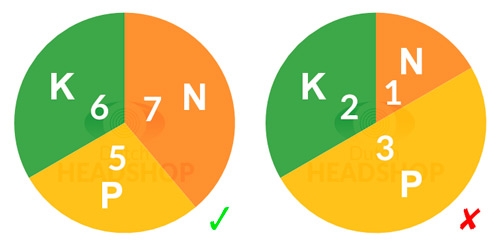
Excellent all-round growth nutrition (left) vs. inadequate nutrition for the growth of weed plants (right).
|
. |
Soil |
Hydro Growing |
|
Nitrogen |
High |
High |
|
Phosphorus |
Average |
Above average |
|
Potassium |
High |
High |
NPK for the blooming phase
Because the need for the ratio of nitrogen, phosphorus and potassium (NPK) changes during the life of your weed plant, there are different kinds of nutrition. A good NPK for the whole blooming phase of your weed plants is 3-10-10. Again, 1-3-3 is not wrong for your weed plants; it is just not as optimal.
|
. |
Soil |
Hydro Growing |
|
Nitrogen |
Low |
Low |
|
Phosphorus |
Above average |
High |
|
Potassium |
High |
High |
NPK for specific weed plants
A whole book could be written about the optimum NPK for weed plants. As we have already discussed, the phase of the plant is very important in determining the type of nutrition. To a smaller extent the need for nutrition also differs between types of weed. An Auto Amnesia Haze can have a different need than an OG Kush. Usually there is not much difference. Moreover, weed plant nutrition is so well engineered that it compensates for these differences without any problem. You do not need to worry about this with any of our plant nutrition brands.
The best NPK for weed plants varies considerably during the different phases of life of your plants. Here is a nice overview of NPK values for your weed plant.
|
Phase |
NPK |
|
Seedlings |
2-1-2 |
|
Pregrowing |
4-2-3 |
|
Growth phase |
10-5-7 |
|
Changing from growth to bloom |
1-1-1 |
|
Early blooming phase |
5-10-7 |
|
Halfway through the blooming phase |
6-15-10 |
|
Late blooming phase |
4-10-7 |
|
Flushing (last 10-14 days of bloom) |
Do not give any nutrition |
These values are different from what we wrote earlier in this article because this overview is more detailed.
|
Seedlings |
Pregrowing |
Growth phase |
Changing from growth to bloom |
|
|
|
|
|
|
Early blooming phase |
Halfway through the blooming phase |
Late blooming phase |
Flushing (last 10-14 days of bloom) |
|
|
|
|
Do not feed any nutrition! |
Weed plant nutrition Micros and Macros
Until now we have only discussed the NPK. Nitrogen, phosphorus and potassium together are the so-called macronutrients of the weed plant. You can see them as the ratio of carbohydrates, proteins and fats that we ingest in our diet. But if people do not get vitamin C, we develop scurvy. So there are also micronutrients for weed plants. You can think of them as essential vitamins. Calcium, magnesium and boron are examples, but there are more substances that make your weed plant happy and healthy.
Often, these substances are found in the soil in sufficient quantities to be able to grow a weed plant with. But then again, with a lot of effort. That is why almost all plant nutrition for weed not only has a balanced NPK especially for the blooming or growth phase, but is also enriched with micronutrients. So do not choose any plant nutrition that you can pick up off the shelf at the garden center, but rather special nutrition for weed plants. Both micro and macro nutrients are indispensable for hydro growing.
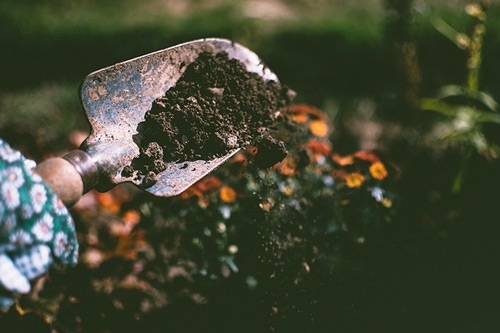
The Role of Supplements
Nevertheless, weed plant nutrition is only just enough to keep your weed plant healthy. Supplements are meant to really take your cannabis plant to the next level. It will keep your plant looking healthy from seedling to the last weeks of blooming. Compare it to the diet of a top athlete and an office worker. The top athlete delivers performances that an office worker admires on TV in the evening. Preferably with a bowl of crisps on his lap. What we mean by this is that sportsmen and office workers can all live to be equally old, but only one will go home with the gold. And a balanced diet has a large contribution to the performance increase.

Want to become a Cannabis Cup winner? Grow your plants with the right nutrition!
That's why so many top growers swear by enriching the menu for their weed plants. Supplements are not just a balanced amount of micronutrients that make your buds bigger, heavier and juicier. They also contain, for example, additives for better nutrient absorption, larger roots and for overactive bacteria and fungi. These micro-organisms in turn supply nutrition to the weed plants.
So you see that supplements are really meant to get the best out of your plant. Nutrition, on the other hand, is of vital importance to your weed plants. Regardless of the chosen growing medium. So choose the correct growth and blooming nutrition that has been specially developed for weed.
Plant nutrition and pH value
All the substances you add to the soil contribute to the final pH value of the moisture in the soil. Whether you are growing in soil, coconut fiber or rock wool. Some fertilizers are simply more acidic than others. But it is important that the balance is maintained. That is why the NPK and the quantity of macro- and micro-nutrients are not the only reason to choose a weed fertilizer. The corresponding pH value is also decisive for the health of your weed plants. All substances that weed can and must absorb have a certain pH range in which they can do so optimally. That range is different for each medium. Read this article if you want to know more about the right pH value for growing weed.
Don't feel like learning today? Then choose for example the pH-Perfect formula by Advanced Nutrients and grow in soil. The soil provides a natural buffer and this basic nutrition ensures that your pH stays optimal.
